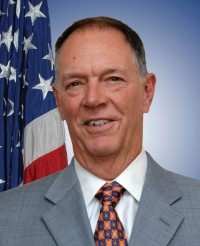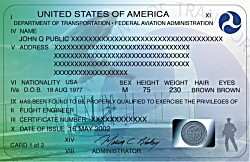Money Collected Would Offset Fuel Taxes Not Paid By Pilots Who
Don't Fly Regularly
ANN April 1st Special Edition:
FAA Administrator Randy Babbitt is reportedly considering tacking a
surcharge onto renewal fees paid by pilots. The surcharges would be
based on the number of hours a pilot flies in any given year.

Due to decreasing revenues to the federal government, and
because the President and Congress has asked all government
agencies to come up with ways to not only save money, but to also
increase revenues, the FAA has developed this fee scale for nearly
ALL pilots, most of them holding GA-related certificates and
ratings, with different annual renewal fees dependent upon ratings
and endorsements and hours flown each year.
In an internal memo forwarded to ANN, the Administrator proposes
a registration fee structure that begins with a basic registration
fee of $20. For pilots logging from 0 to 99.9 hours annually in the
previous calendar year there will be a $100 surcharge each renewal
period. The FAA says the surcharge is intended to offset the
revenue from Federal aviation fuel taxes that the pilot did NOT pay
by not flying at least 100 hours during the previous year.
all pilots, for the first time, will not only have to renew what
was previously a lifetime certificate and pay annually, but will
also have to keep a logbook and make entries for each flight to
avoid the additional fees.
For pilots holding advanced ratings (beyond S.E.L. etc), the
fees will be similar. However, Babbitt notes in an internal memo
that all flight hours will not count in the hours requirement for
this section of the new regulation. For instance, in addition
to paying for your S.E.L. rating every year, if you have an
Instrument Rating, there will be an additional $10 annual charge
for that rating as well as an additional surcharge of $100 if fewer
than 10 hours of actual IFR flight are logged. These 10 hours
will count towards your annual total flight hours, but an
Instrument Rated pilot could find him or herself in a situation
where he or she flew 200 hours in a calendar year, but of them,
only 9.5 were IFR, and is assessed an additional $100.

Pilots who fly aircraft which run on mogas or other alternative
fuels will also be assessed additional fees based on any STC on
file with the FAA. Those will be in addition to the low-time
surcharge. Sport Pilot fees begin at $10 for basic renewal, and the
first surcharge is $50 for those flying under 100 hours.
EAA President Tom Poberezny called the proposal "just about the
stupidest thing I've seen come down the pike since since Orville
and Wilbur knocked together that first airplane in shed in Kitty
Hawk in December." NBAA President and CEO Ed Bolen said the new fee
structure is "simply outrageous! The monitoring will cause
nightmares for pilots AND will be hard to prove if the FAA ever
audits you as an individual pilot." However, several iPhone and
iPad apps are reportedly already in development to automatically
track your flight time and push that data to a federal government
server.
For those who determine they are unable to afford the fee
structure, the FAA does make a provision for terminating your pilot
certificate privileges. Fees for termination, which are
irrevocable, begin at $50 for Sport Pilot, and increase based on
additional ratings and endorsements.
 ANN's Daily Aero-Term (11.16.25): NonApproach Control Tower
ANN's Daily Aero-Term (11.16.25): NonApproach Control Tower Aero-News: Quote of the Day (11.16.25)
Aero-News: Quote of the Day (11.16.25) ANN's Daily Aero-Linx (11.16.25)
ANN's Daily Aero-Linx (11.16.25) NTSB Final Report: Vans Aircraft Inc RV-12
NTSB Final Report: Vans Aircraft Inc RV-12 ANN FAQ: How Do I Become A News Spy?
ANN FAQ: How Do I Become A News Spy?




